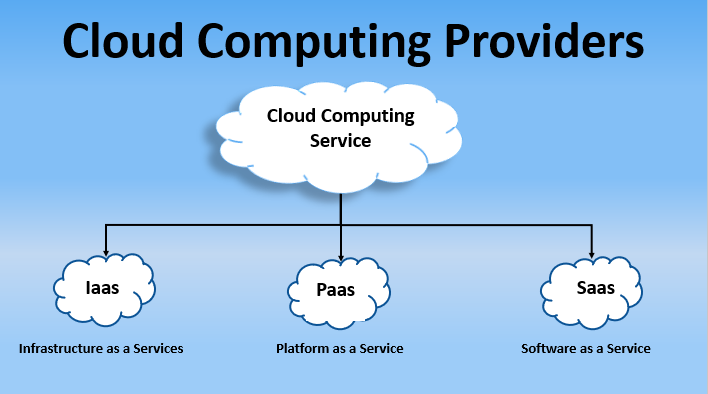Discover the Power of LinkDaddy Cloud Services: Official Press Release Insights
Wiki Article
Achieve Seamless Scalability With Cloud Provider
In the ever-evolving landscape of cloud services, accomplishing seamless scalability stands as a keystone for contemporary organizations seeking to stay versatile and affordable. The quest for smooth scalability with cloud solutions reveals a world of opportunities for those ready to welcome the transformative power of dynamic source management.Advantages of Cloud Scalability
Cloud scalability uses companies the flexibility to dynamically readjust resources based on demand, making sure optimal performance and price efficiency. One essential advantage is the ability to scale resources up or down promptly in response to changing work. This dexterity makes it possible for companies to satisfy transforming customer requirements without over-provisioning resources, inevitably bring about set you back financial savings. Scalability also improves efficiency by ensuring that systems can deal with boosted website traffic or work without experiencing downtime or stagnations. By efficiently assigning sources, companies can maintain high levels of performance during peak times without unnecessary expenses during quieter periods. Additionally, cloud scalability advertises development and experimentation by allowing services to quickly test new ideas and scale them as needed. This flexibility encourages a society of continual renovation and adjustment, allowing organizations to remain competitive in a quickly progressing market landscape. Eventually, the benefits of cloud scalability prolong beyond cost financial savings to incorporate enhanced performance, dexterity, and innovation.Key Attributes for Scaling
Effective scaling in cloud services depends on essential features that make it possible for companies to change resources dynamically based upon need. One crucial function for scaling is flexibility, allowing sources to scale up or down in response to varying workloads. This makes certain that companies can satisfy efficiency needs without over-provisioning resources. One more essential attribute is scalability, allowing systems to take care of boosted workload by adding sources perfectly. This function is crucial for fitting development without jeopardizing efficiency. Additionally, automation plays an important duty in scaling by automating the provisioning and de-provisioning of sources based on predefined policies. Automation lowers human intervention, enhances effectiveness, and guarantees fast feedback to altering needs. Monitoring and analytics devices are also vital for scaling, providing understandings right into source use, performance metrics, and prospective bottlenecks. These devices enable companies to make educated choices and enhance source appropriation for efficient scaling. Generally, these crucial attributes collectively encourage organizations to accomplish smooth scalability in cloud solutions.Applying Auto-Scaling Approaches
To properly enhance resource appropriation and adjust to varying workloads, organizations should tactically execute auto-scaling strategies in their cloud solutions facilities. Auto-scaling allows systems to automatically readjust the number of calculate resources based on real-time demand. There are numerous auto-scaling methods that organizations can use, such as find more info anticipating scaling, which utilizes historical information to forecast future source needs, and reactive scaling, which reacts to present workload changes.Best Practices for Scalability
For companies intending to improve their scalability in cloud solutions, applying ideal practices is critical for optimal efficiency and source monitoring. One secret best technique is creating applications with a microservices architecture. This strategy breaks down applications into smaller, independent solutions that can be deployed, upgraded, and scaled individually, enabling greater adaptability and scalability.One more essential method is utilizing containerization technology, such as Docker or Kubernetes. Containers allow the product packaging of applications and their dependences into isolated units, making it less complicated to scale parts independently and release them regularly throughout different settings.
Furthermore, implementing automated implementation and infrastructure as code (IaC) can streamline scalability efforts (linkdaddy cloud services). Automation devices like Terraform or Ansible aid in provisioning and handling resources effectively, decreasing hand-operated errors and making it possible for rapid scalability
In addition, checking performance metrics, establishing notifies, and conducting regular capability planning are crucial practices to make certain proactive scalability administration. By sticking to these best practices, organizations can attain smooth scalability in their cloud services while enhancing efficiency and source use.
Surveillance Performance Metrics
When analyzing the effectiveness of cloud services scalability, check my blog closely checking efficiency metrics is important for making certain optimum capability and resource allowance. By continually tracking crucial efficiency signs (KPIs) such as feedback times, throughput, source, and latency utilization, companies can gain beneficial insights right into the health and performance of their cloud facilities. Keeping an eye on performance metrics permits for the early discovery of possible traffic jams or concerns that might influence scalability, making it possible for proactive steps to be taken to resolve them prior to they escalate.

Verdict
In verdict, accomplishing seamless scalability with cloud services is important for organizations to maximize efficiency, improve technology, and maintain high performance levels throughout peak times. By leveraging the benefits of cloud scalability, carrying out auto-scaling approaches, making use of key functions such as flexibility and automation, and complying with ideal techniques like application layout and efficiency monitoring, companies can effectively scale their systems while making the most of resource usage and performance.The pursuit for smooth scalability with cloud services unveils a globe of opportunities for those eager to welcome the transformative power of vibrant resource monitoring.
Cloud scalability provides companies the flexibility to dynamically adjust resources based on need, making certain optimum performance and expense effectiveness. One more key function is scalability, making it possible for systems to manage raised work by adding sources effortlessly.For companies aiming to improve their scalability in cloud solutions, implementing best methods is essential for optimum performance and resource monitoring.When examining the effectiveness of cloud solutions scalability, closely keeping track of efficiency metrics is crucial for guaranteeing optimum functionality and source allocation.
Report this wiki page